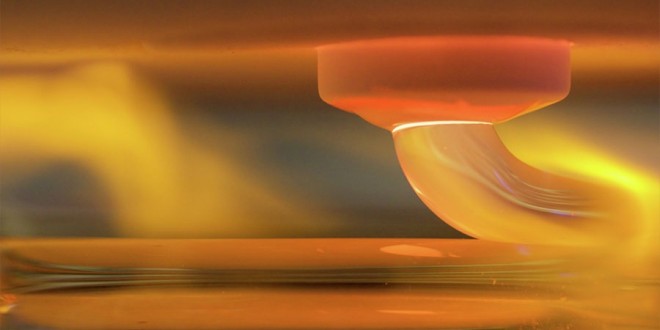By Dan
3D printing was the most important invention of the last decade. However, if you want to create something, most of the time you are going to use plastic. 3D printers use layers and layers of plastic strings to create a shape, and melt it together to keep that shape. However, recently researchers at MIT unveiled the ability to 3D print glass, similarly to how plastic is printed. For thousands of years, glass sculptures were made by heating glass to make it more malleable, most of the time slowly spun while molded by hand. Now, we can use glass printing. Glass printing works the same way as printing plastic, layering over and over again to keep its shape. Heat sand to 1900 degrees Fahrenheit, add a bit of chemicals, slowly ooze it into layers, and boom.
It’s possible to layer the glass in different ways to create different patterns, and looks just like pouring honey in layers, adding an element of visual appeal to 3D printing. With this, many little sculptures can be made, and thus a new form of art is created. However, one issue with this design is that it is very difficult to accurately control the temperature, sometimes causing the glass to droop or be too stiff. Even though these issues are prominent, new improvements are always being made.
But this kind of technology could be used for so much more than just little sculptures. Just imagine, one day glass buildings could be printed instead of manually installed. It could be used not just in architecture, but smaller things as well. For example, a vending machine could even make its own glass bottle, and then fill it with the drink that someone wants. If we want to think even bigger, we can think about its use in airplanes. If people were able to 3D print glass parts, it would be much cheaper than manually constructing it, and may also reduce weight and thus, increase fuel efficiency. Obviously, it will take a while until this kind of technology could be perfected, but it is a breakthrough nonetheless.
(image credit: lidtime.com)
 Tempus Magazine By Students, For Students
Tempus Magazine By Students, For Students 



